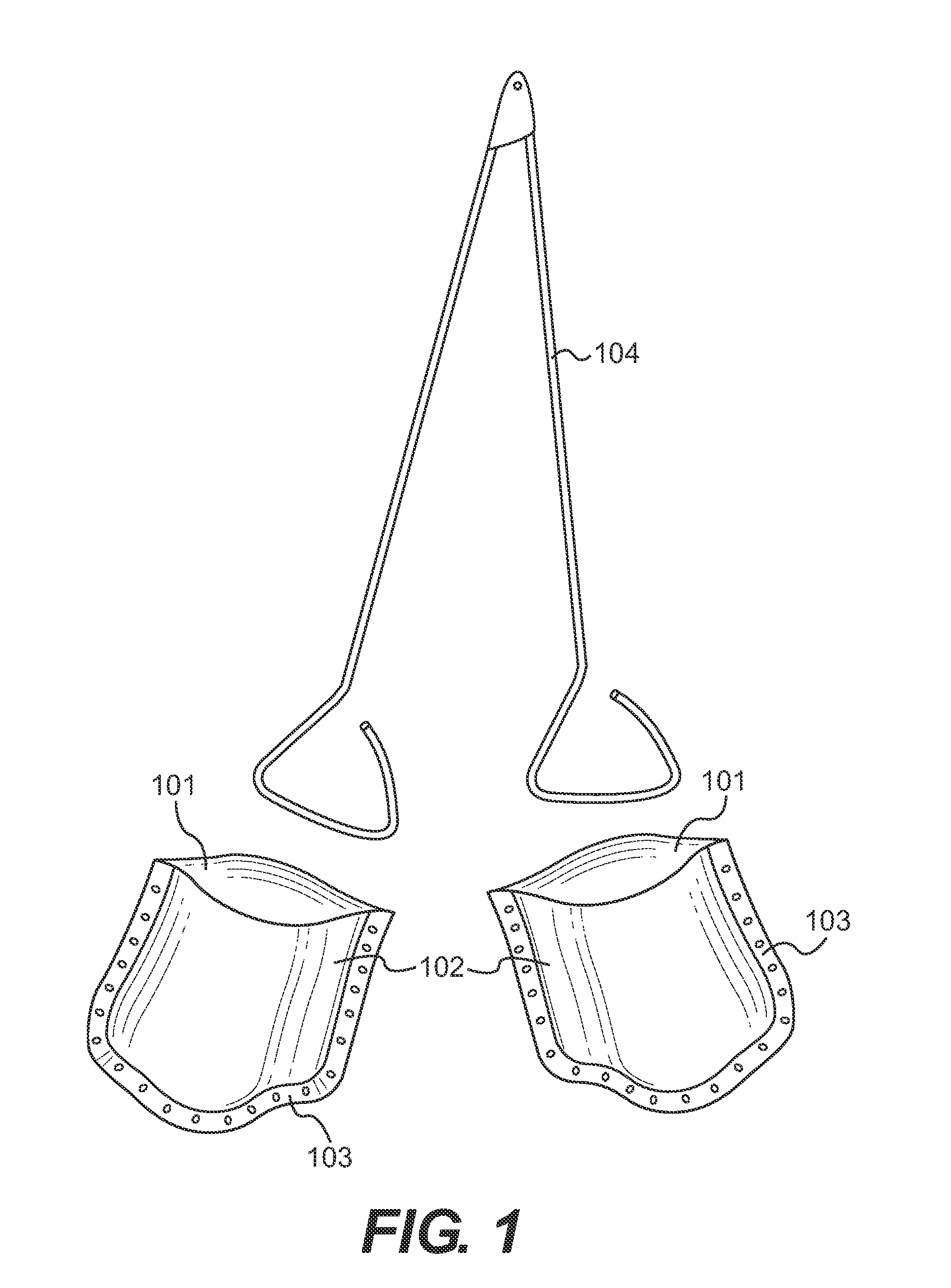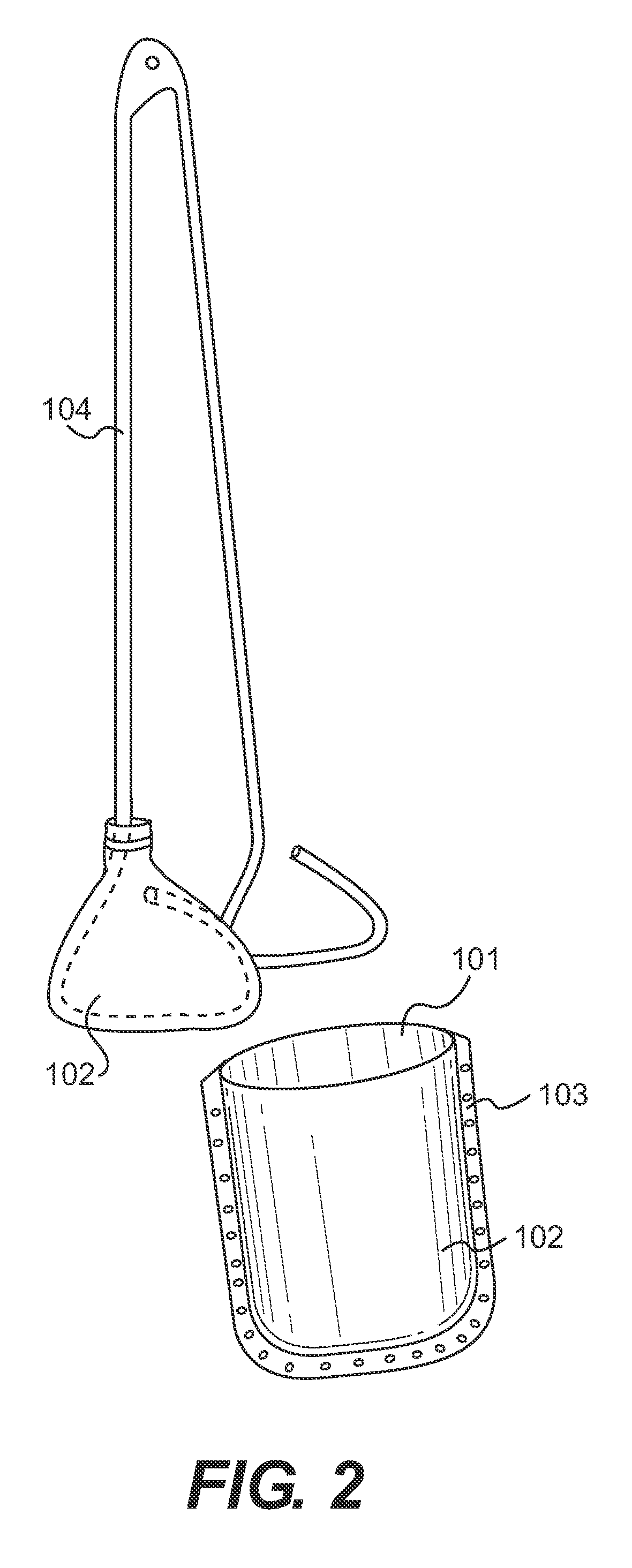Means and Method to Protect Items From Contamination
- Summary
- Abstract
- Description
- Claims
- Application Information
AI Technical Summary
Benefits of technology
Problems solved by technology
Method used
Image
Examples
Embodiment Construction
[0015]Referring now to FIG. 1, a protective sleeve comprises a hollow interior portion 101 that may cover the end of a pair of tongs 104. The interior portion 101 and exterior portion 102 are comprised of a malleable material, such as thin aluminum, so to allow the protective sleeve to be crimped and formed to the shape of a tool, such as a cooking utensil, medical tool, industrial tool or the like. The exterior portion 102 is in contact with contaminates (such as raw or undercooked meats) and thus protects the utensil or tool from being contaminated. After use, the protective sleeve is easily removed and another is placed on the utensil or tool when contact with contaminated materials (i.e. raw or undercook meats) resumes. In this manner, the protective sleeve prevents the utensil or tool from cross-contamination of the food or materials being handled (i.e. when the meat has become cooked and free of harmful substances). The protective sleeve further comprises an outer trim 103, wh...
PUM
| Property | Measurement | Unit |
|---|---|---|
| Shape | aaaaa | aaaaa |
Abstract
Description
Claims
Application Information
 Login to View More
Login to View More - R&D
- Intellectual Property
- Life Sciences
- Materials
- Tech Scout
- Unparalleled Data Quality
- Higher Quality Content
- 60% Fewer Hallucinations
Browse by: Latest US Patents, China's latest patents, Technical Efficacy Thesaurus, Application Domain, Technology Topic, Popular Technical Reports.
© 2025 PatSnap. All rights reserved.Legal|Privacy policy|Modern Slavery Act Transparency Statement|Sitemap|About US| Contact US: help@patsnap.com



